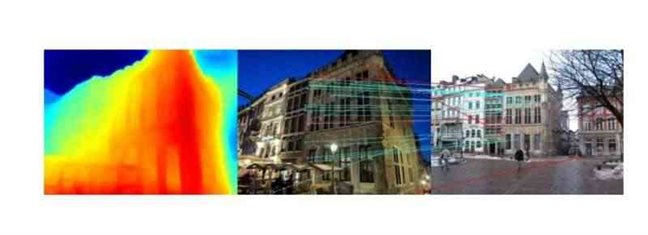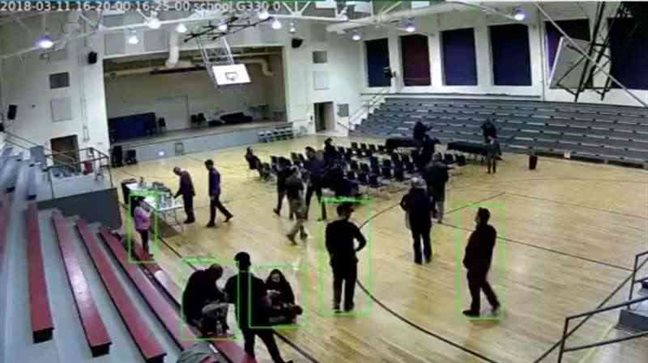OPPO Achieves Two First-Place Awards in AI category at CVPR
18th June 2020, Kathmandu
Leading global smartphone brand OPPO was recently a participant at the virtually held Computer Vision and Pattern Recognition Conference (CVPR) 2020. OPPO demonstrated its industry-leading technological strengths and innovative breakthroughs, particularly in the AI space, as well as unveiling a new department of Intelligent Perception and Interaction to explore cutting-edge AI technologies in their Research Institute. OPPO’s success was highlighted by placing in three different contests, winning two first-place and two third-place awards at the CVPR 2020 Challenges.
OPPO Achieves Two First-Place Awards in AI category at CVPR 2020 demonstrating industry-leading technological strength
- OPPO won two first-place and two third-place at the CVPR 2020, a leading global conference on AI
- OPPO Research Institute unveiled a new department of Intelligent Perception and Interaction
- Award-winning technologies include extreme perceptual super-resolution, visual localization, and human behavior recognition in videos.
Technologies that won the awards include perceptual extreme super-resolution technology, which can make a blurry photo 16 times sharper naturally, visual localization that can tell where the picture is taken by analyzing the image, and human activity recognition in videos.
Additionally, members of OPPO’s Research and Development team participated in several sessions of the conference, including delivering keynote speeches and participating in seminars to share their insights on computer vision technologies with thousands of leading researchers worldwide.
CVPR is a premier annual computer vision event organized by the IEEE(The Institute of Electrical and Electronics Engineers. It covers every aspect of computer vision and pattern recognition, machine learning, and AI, and provides exceptional value for students, academics, and industry researchers.
Eric Guo, Chief Scientist, Intelligent Perception, OPPO, said, “we are very pleased to have achieved remarkable results on behalf of OPPO in this year’s CVPR Challenges,reflecting three of our core research directions: environmental perception,human-centric computing, and image/video generation. This is the first public demonstration of our R&D results since the establishment of the Intelligent Perception and Interaction Research Department of the OPPO Research Institute, which also fully reflects OPPO’s AI strength”.
He added, “we all know that the invention of the mouse and graphical user interface contributed to the success of the personal computer and touch screen deserves much credit for the booming success of smartphones. Every time the human-computer interaction mode and intelligent perception technology evolve, they lead to brand new tech trends. At OPPO, we are committed to making smart devices more intelligent, so they understand users better. We will then be able to develop new human-computer interaction methods to lead the next wave of technological progress”.
OPPO believes that the cutting-edge exploration in the field of intelligent perception and interaction will fully empower OPPO technologies and products in the future, which will provide users with more innovative interaction method and experience.
OPPO US Research Center also participated in CVPR 2020 and won 6th place in Real-World Super-Resolution Challenge, Track 1: Image Processing artifacts. Meng Zibo, manager of Spacetime Lab of OPPO US Research Center, gave a keynote speech on the institute’s leading research on AI-assisted low light photography titled “Looking into the dark: from image to video” andShuxueQuan, Senior Director of Computer Vision and AI, gave a speech on localization and mapping titled “Building a unified SLAM system running on both smartphone and AR glass from scratch.”
Perceptual Extreme Super-Resolution Challenge
In this challenge, the OPPO Research team was charged with solving the problem of extreme perceptual super-resolution for a single image with a magnification factor x 16. The objective is to obtain a model capable of producing high-resolution results with the best perceptual quality and similarity to the ground truth. The team developed and demonstrated the effectiveness of their neural network called RFB-ERSGAN, beating out 280 other participants with its more intelligent analysis, more efficient computation. More diversified methods, ultimately winning the first-place among teams from Facebook, Baidu, Microsoft, Amazon, and the Chinese Academy of Science.
 OPPO’s RFB-ERSGAN neural network produces more natural textures, e.g., animal fur, building structure, and plant texture
OPPO’s RFB-ERSGAN neural network produces more natural textures, e.g., animal fur, building structure, and plant texture
The technology will be applied in several scenarios. For example, it can help users to change LR photos taken by their smartphones to HR pictures with rich details. Other applications may include: restoring old or damaged photos and old films, refining relevant medical images, or conducting detailed analyses on satellite images and space images.
Visual Localization for Handheld Devices Challenge

Achieving one first-place on outdoor visual localization(Aachen Day-Night)and one third-place on indoor visual localization(InLoc), OPPO created a monocular visual localization pipeline that leverages semantic and depth cues to find the precise location of any query image. Overcoming a significant obstacle for many computer vision applications, which is to identify and eliminate a significant amount of incorrect results, this method has performed at a state-of-the-art level through robust experimentation.
Likely future uses include augmented reality, intelligent robotics, or precise navigation. For example, when the AI assistant is equipped with a camera, it can leverage visual localization technology to analyze the pictures taken and achieve accurate positioning and thus move to the right location.
Activity Detection in Extended Videos
Winning third place in Activity Detection in Extended Videos, to respond to this task encouraging the design of automatic activity detection algorithms, OPPO built theirs to efficiently identify and reorganize the characters in each frame and recognize dozens of human activities in complicated dynamic videos. This technology will play an essential role in the fields of human-computer interaction, and sports video analysis in the future. For instance, future smartphones will be able to identify moving subjects and adjust the camera focus accordingly automatically.
New Intelligent Perception and Interaction Department
In addition to their performance in the challenges at CVPR 2020, OPPO Research Institute announced it had established a new Intelligent Perception and Interaction Department earlier this year, marking further exploration by OPPO into cutting-edge AI technologies. Its explicit aim is to vigorously promote research and development in the two core areas of intelligent perception and interaction. The department is bringing talent from many top tech firms and research institutes to support their ongoing efforts. It has also invited leading AI expertEric Guo to serve as the Chief Intelligent Perception Scientist, who has hosted a workshop about drone detection and tracking materials at the CVPR conference.
Eric Guo used to work for Microsoft as a researcher and has conducted multiple industry-leading pieces of research over the years. His computer vision models are widely used in many industry solutions such as image search, knowledge graph, a smart cloud, and intelligent mobility
OPPO has set up a team to explore the AI area since 2015, especially in domains of phonetics and semantics, as well as computer vision. As of March 2020, OPPO has filed more than 1,900 patent applications in the AI area globally. It will give support to OPPO in the 5G and even 6G era by developing brand new devices and will provide a solid technical foundation for the coming age of intelligent connectivity.
To date, OPPO has built up a research team of more than 10,000 people, six research institutes, and four R&D centers around the world. Additionally, OPPO founder and CEO Tony Chen said the company would invest RMB 50 billion (USD 7 billion) into R&D spending in the next three years to develop core technologies in hardware, software, and system in addition to 5G, AI, AR, big data and other frontier technologies. Moving forward, OPPO is committed to continuously explore cutting-edge technologies to provide users with the next generation of innovative interaction methods and service experiences.







